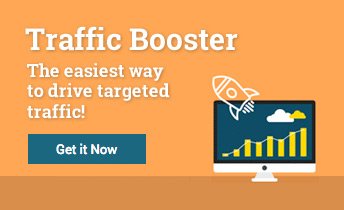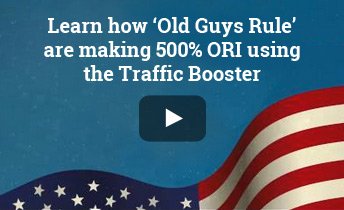Does Google Ads Work?
In other words, how relevant your homepage and products pages are to what people are searching. This is important because your quality score directly affects your Ad Rank and your Ad Rank will determine how Google chooses the order in which ads with the same keywords are displayed as well as the Cost Per Click (CPC) you are paying for each click on your ad.
So, in turn, Ad Rank will affect your ad spend as you will want to pay the lowest amount to beat the Ad Rank of your closest competition. We know, we are getting a little ahead of ourselves, but bare with us. As we mentioned, understanding AdWords is the key to making sure it works for your eCommerce store.
The best way to answer the question, “Does Google Ads work”, is to look at those common myths surrounding Google Ads that argue that it doesn’t work, and to give you the optimization tools and guidelines needed to refute them.
But first, a brief recap of the basics.
How Google Ads Works
eCommerce store owners are able to bid on keywords that a potential shopper may be searching for. These ads are then clicked on by the user, which takes traffic directly to your site with the goal that this traffic will result in a lead or a sales conversion. For these ads, you are paying for every click on the advert. This is where we get to the crucial bit, the piece of resistance, if you will: In order for AdWords to work for you, that traffic you are driving, needs to be targeted.
Now, onto debunking those AdWords myths to prove that yes, AdWords DOES work!
Myth 1: If You Have Good SEO, There is No Need to Pay per Click…
This is one of the most common arguments that clients use when refuting AdWords. But here is the thing:
- If you’re not bidding on even your own terms, you can bet someone else is, and his ads might be displayed on top of your SEO ranking - that’s just how Google displays them.
- It takes a very long time and a lot of energy to build your SEO, and there is no way you can do it for every relevant term. Your are bound to be missing on a lot of search terms of potential customers that your SEO just didn’t reach.
- Researches show that when you are in top position in both SEO and PPC (AdWords), you will be getting more clicks than if you were only on the top position of SEO. It just enlarges the cake for you.
Like we learned in our ppc vs. seo - which provides better value? post, the secret to making Google Ads work, is to do both ppc while optimizing and improving your seo. while seo is perfect for top of the funnel traffic and informational searching, ppc drives highly targeted traffic - quickly - resulting in almost instantaneous results.
Myth 2: AdWords is OH So Expensive…
Yes, AdWords ads require budgets and bids - AKA money in the bank - but:
- They are the most quantitative promotion you can get. You put the money and immediately see what is coming in from the other end. Sure the campaigns would require optimization, but at least you can see if you are off to a promising start, and hey - you have how to optimize it immediately - no other method enables you to do so.
- if optimized correctly, PPC can give you the best ROI of any advertising platform. What are ROI for an online store owner? Sales conversions. If you are already using AdWords but find that it’s costing you too much for too little results, the answer lies in your management and optimization. Here are two ways you can beat the myth and make AdWords profitable:
Restrict Your Match types
Having broad match types can make your AdWords ads super pricy! This is because the broader your match types are, the more broad your ad audience will be. What this translates to is traffic that is not targeted enough, resulting in clicks without conversions. You can do this by narrowing your keywords match type to “Exact” or “Phrase” or by making use of Negative Keywords to eliminate irrelevant searches and therefore ensure more targeted clicks and less irrelevant traffic.
Automate Your Optimization
It’s vitally important to balance your bids and your budget strategy as well. Using an app like traffic booster will ensure you get targeted traffic, optimized and ad automation for a very reasonable price. it also allows for you to free up more time to work on your store or other digital marketing efforts as it will take ppc of your shoulders. this is the perfect solution for those merchants without a big budget or expert knowledge on the inner workings of adwords that we’ve discussed here - all vital in ensuring you get the most conversions for your spend.
Myth 3: The Traffic I’m Getting Doesn’t Convert
So many of our clients come to us initially because of exactly this. They are getting traffic but they are just not converting enough to warrant the spend. In almost all cases, it’s their optimization and Ad Group structures that are not set up correctly. Here are the most common causes of high traffic with low conversion rates.
They’re Not Remarketing
Remarketing is vitally important, so that one-time clickers turn into repeat visitors and shoppers (AKA: Sales Conversions). You can do this by adding apps such as Coupon Pop, where you give your traffic incentive to sign up to email marketing or by adding Cookies to your site to get invaluable data that helps you follow them around the internet using AdWord, which helps drive product sales and builds trust in your brand.
Their Account isn’t Structured Properly
The way your account is set up, directly influences your conversion rates. This can be anything from the keywords you’re targeting, your quality score, or that your Ad Groups are not well structured and are packed with irrelevant terms. Setting up your account correctly, and having a good campaign structure, can go a long way in ensuring Google Ads works for your eCommerce business.
They’re Misusing Dynamic Keywords
Dynamic Keyword Insertion is an AdWords options that allows you to dynamically insert keywords into your ad to make your ads highly relevant. This is a highly effective strategy, however, if you’re using it to insert tons of keywords randomly, without using negative keywords, you won’t be converting as you should.
Their Landing Pages aren’t Great
Ask yourself if your content is clear and easy to read, and will potential shoppers understand what their next step is when reaching the URL linked to your ads? You can be getting all the targeting traffic in world, but if the landing page you’re sending them to is unclear, has no call-to-action, is messy or is just not appealing, that traffic is going to bounce right out of there! There are a number of things you should do to ensure that your landing page, in the eyes of potential shoppers, doesn’t suck. The very first thing is to A/B test. Don’t be afraid to play around and test a few versions until you have your goal conversion rate.
We hope these prove once and for all that Google Ads works. For an in-depth look into Google Ads, visit our everything you need to know about adwords guide.

